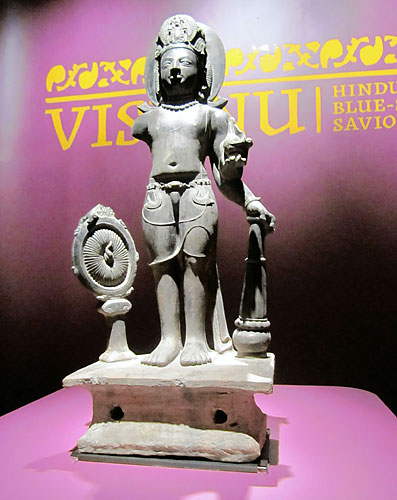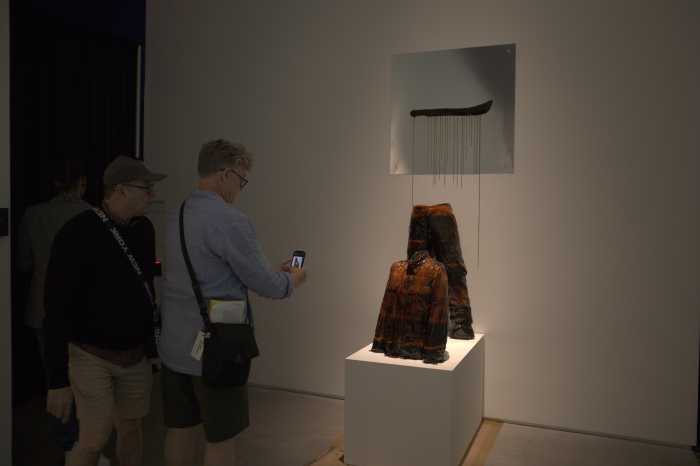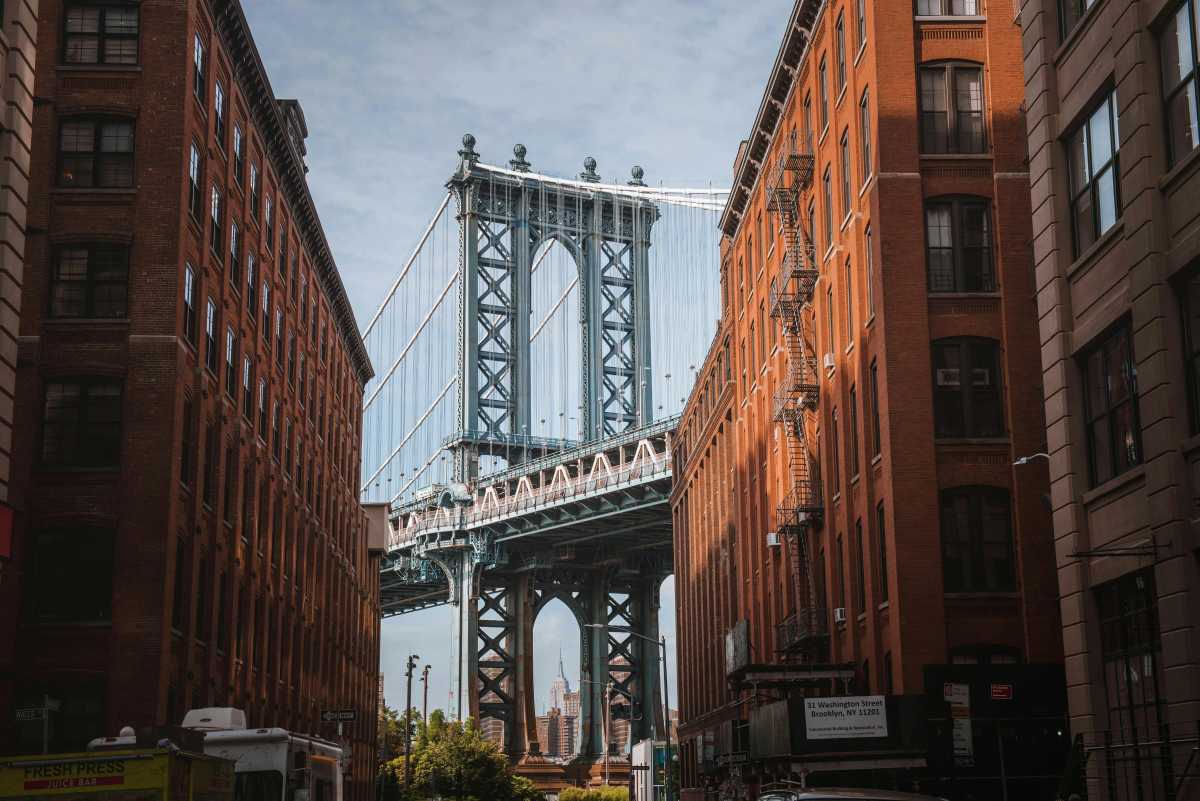Do you know Vishnu? You should after this show.
The Brooklyn Museum’s newest exhibition presents an exhaustive look at the blue-skinned Hindu deity. And by exhaustive, we also mean exhausting.
After surveying the more than 170 Indian, Pakistani and Bangladeshi items pulled together for the show — a repetitive mix of centuries-old statues of the god, 18th-century watercolors depicting his various avatars, and ritual items used during worship — you’ll be struggling to keep Rama and Ravana straight.
Of course, a studious show was never a bad thing — art appreciation does require work — and the breadth of this ambitious exhibition is really something. But I was getting caught up in the minutiae of it all to stop and really appreciate the art for art’s sake. And given the museum’s recent financial troubles, which forced it to scale back hours and cancel a high-profile show, space devoted to an obscure topic without much mass appeal is bad timing.
But on to the show. Like other supreme deities, Vishnu is said to be too powerful to have a form comprehensible to us mere mortals, but that didn’t stop devotees from trying. Two striking statues of Vishnu get you started. Upon entering the hall, the first piece you see is a fourth-century terracotta, signs of its age visible thanks to a few missing arms (Vishnu is sometimes depicted with four — it’s busy being the creator). The second statue, a seventh-century sandstone, is in the main exhibition space. They’re not very tall — around two feet in height — but both are smartly positioned outside of any glass encasement, and emanate a certain power thanks to their accessibility.
Moving past the multiple images of Vishnu and his depicted legends, you reach the real meat of the show — the avatars, or earthly bodies of the god. There’s 11 in total, from Varaha the boar to Narasimha the man-lion to Krishna the cowherd prince, though he’s often considered powerful enough to be his own god. There’s even a computer game where you can try to identify the different avatars based on their characteristics that’s worth a try.
The paintings presented here — the majority of which are watercolors — make for some pretty works. Though most are so small you would benefit from a magnifying glass to truly appreciate the detail. Upon close inspection, it’s often pretty violent imagery — one that stuck with me was a depiction of Narasimha, the man-lion avatar, killing Hiranyakashipu, a power-seeking deity, by tearing out his entrails and stomping on them. Bring the kids (boys will love it)!
If the museum really wanted to capitalize on the wealth of its subject matter, it should have just called the show “Avatar” and focused on Vishnu’s incarnations. His escapades in these various forms makes for the most-varied art and compelling storytelling. Especially given how one of the last, main sections of the exhibition — worship — is too much of a challenge to put together. Most Hindu devotion as we know it doesn’t use art objects (yoga being a big one), and, as a result, this section is underwhelming.
The last room is dedicated to popular prints of Vishnu. Given their mass quantity — you could have a whole show dedicated to images of Vishnu in popular culture — the selection here is limited to just a handful, though it would have been beneficial to see more modern interpretations of the god to further appreciate his resonance. One of the more interesting pieces in the exhibition is also found here — M. Abbayi’s “Krishna and Yashoda.” The depiction of the infant Krishna held by his adopted mother, in a direct reference to Raphael’s “The Sistine Madonna,” was the only provocative piece in the show, and I wanted to see more like it.
By the end, though, I was ready to pack it in. I did feel more educated about Vishnu, just don’t quiz me on it.
“Vishnu: Hinduism’s Blue-Skinned Savior” at the Brooklyn Museum [200 Eastern Pkwy. at Washington Avenue in Prospect Heights, (718) 638-5000], now through Oct. 2. Closed Mondays and Tuesdays.

























